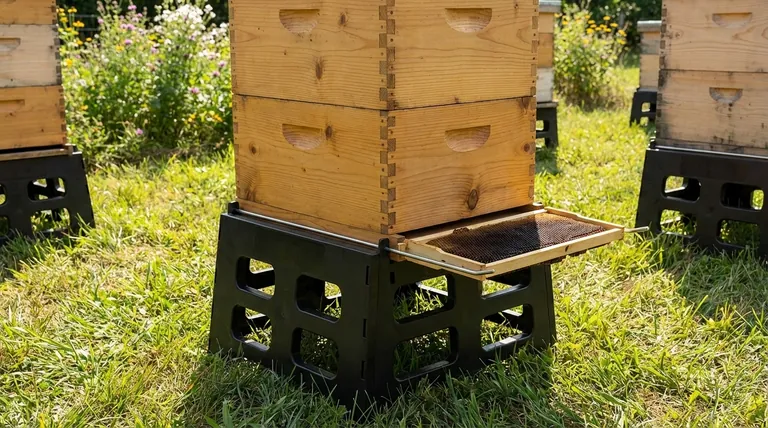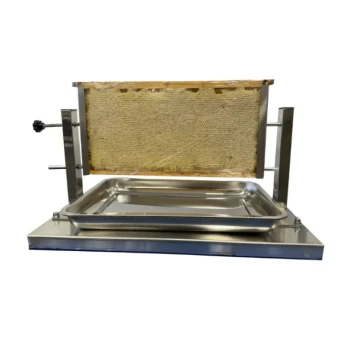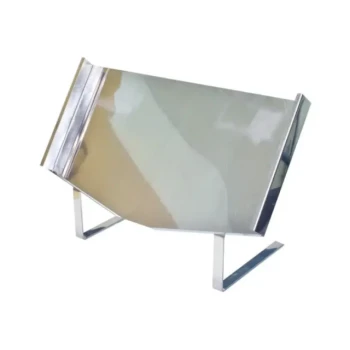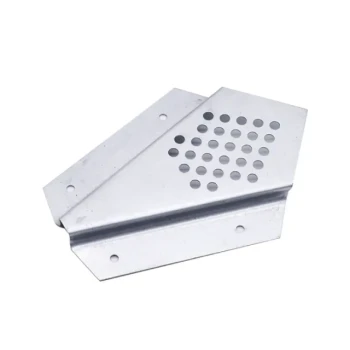At its core, a hive stand is a simple platform designed to elevate your beehive off the ground. While not strictly essential for the bees' survival, its purpose is to create a healthier environment for the colony and a more manageable, ergonomic workspace for the beekeeper.
The primary goal of a hive stand isn't just to lift the hive; it's to solve a host of problems related to moisture, pests, and beekeeper strain before they ever begin. It's a foundational investment in both the longevity of your equipment and your physical well-being.

The Critical Role of Elevation for Hive Health
Placing a hive directly on the ground introduces several preventable risks. A stand mitigates these by creating a crucial buffer between the hive and the earth.
Preventing Moisture and Rot
The most immediate benefit of a hive stand is moisture control. Direct contact with the ground allows moisture to seep into the bottom board, promoting wood rot and creating a damp, unhealthy internal environment for the bees.
By lifting the hive, you ensure the bottom board stays dry and sound, significantly extending the life of your woodenware.
A Clear and Defensible Entrance
A hive entrance at ground level is easily obstructed by growing grass, weeds, and falling leaves. This forces guard bees to expend extra energy clearing debris instead of defending the colony.
Elevation guarantees a clear flight path and an unobstructed entrance, allowing for better ventilation and easier defense against robbing insects or pests.
Improving Hive Insulation
The ground acts as a massive heat sink, drawing warmth away from the hive in winter and remaining cool and damp in the spring.
Elevating the colony improves insulation by creating a pocket of air underneath. This helps the bees better regulate their internal temperature and reduces condensation buildup.
How a Hive Stand Benefits the Beekeeper
Beyond colony health, a well-chosen stand makes the practice of beekeeping significantly more sustainable and enjoyable.
Reducing Physical Strain
Bending over a ground-level hive for inspections puts immense strain on your back and knees. This discomfort can lead to rushed inspections and a less enjoyable experience.
Raising the hive to a comfortable working height is one of the most important ergonomic improvements you can make, protecting your body over the long term.
Providing Stability
A dedicated hive stand provides a level and stable foundation for the hive boxes. This is critical, as a tall, leaning stack of honey-filled supers can become dangerously unstable on uneven ground.
Creating a Convenient Workspace
Many commercial hive stands are designed with extra features, such as integrated frame holders. This gives you a secure place to set frames during an inspection, freeing up your hands and preventing accidental damage to the queen or comb.
Understanding the Alternatives
While a commercial stand is a great option, it is not the only solution. The goal is elevation, and the method can be adapted to your budget and resources.
Is a Special Stand Necessary?
No, you do not need to purchase a specific piece of equipment marketed as a "hive stand." Many experienced beekeepers use simple, effective alternatives.
The key principle is simply to get the hive off the ground in a stable manner.
Common DIY Solutions
Simple and effective stands can be constructed from common materials. Cinder blocks with wooden rails, sturdy pallets, or custom-built wooden benches are all popular and perfectly functional choices.
Making the Right Choice for Your Apiary
The best foundation for your hive depends on your priorities, from budget to physical comfort.
- If your primary focus is budget and simplicity: A DIY solution using cinder blocks or a sturdy wooden pallet is a perfectly effective and low-cost way to protect your hive.
- If your primary focus is ergonomics and convenience: Investing in a commercial stand built to a comfortable working height, potentially with frame holders, will significantly improve your beekeeping experience.
- If your primary focus is hive health: Any method of stable elevation is a massive improvement over placing the hive directly on the ground.
Ultimately, providing a solid, elevated foundation is one of the first and most important steps in setting your colony up for success.
Summary Table:
| Purpose | Key Benefit |
|---|---|
| Moisture Control | Prevents wood rot and dampness by elevating the hive off the ground. |
| Pest & Debris Defense | Ensures a clear, defensible entrance for bees, unobstructed by grass or leaves. |
| Improved Insulation | Creates an air buffer to help bees regulate hive temperature more effectively. |
| Beekeeper Ergonomics | Reduces physical strain by raising the hive to a comfortable working height. |
| Hive Stability | Provides a level, secure foundation for heavy honey supers, preventing tipping. |
Ready to build a stronger, healthier apiary? At HONESTBEE, we supply durable, ergonomic hive stands and beekeeping equipment designed for the demands of commercial apiaries and distributors. Our wholesale-focused operations ensure you get the reliable, high-quality supplies your business needs to protect your investment and streamline your workflow. Contact HONESTBEE today to discuss your supply requirements!
Visual Guide

Related Products
- Plastic Bee Hive Stand for Beekeeping
- Metal Bee Hive Stand Bee Box Stand for Beekeeping
- Metal Hive Feet Bee Hive Stand for Ant Protection
- Professional Drop-Style Hive Handles for Beekeeping
- Professional Ant-Proof Beehive Stand with Integrated Moat for Beekeeping
People Also Ask
- How does the longevity of plastic bee hives compare to wooden hives? Discover the Durable Choice
- Why is elevating the hive important? A Simple Step for a Healthier, More Productive Colony
- What are the advantages of polystyrene hives for beekeeping? Boost Colony Health & Honey Yields
- What are the main differences between Langstroth and Top Bar Hive designs? Choose the Right Hive for Your Beekeeping Goals
- Why is it important to level a hive stand properly? Prevent Catastrophic Failure & Ensure Hive Health



















